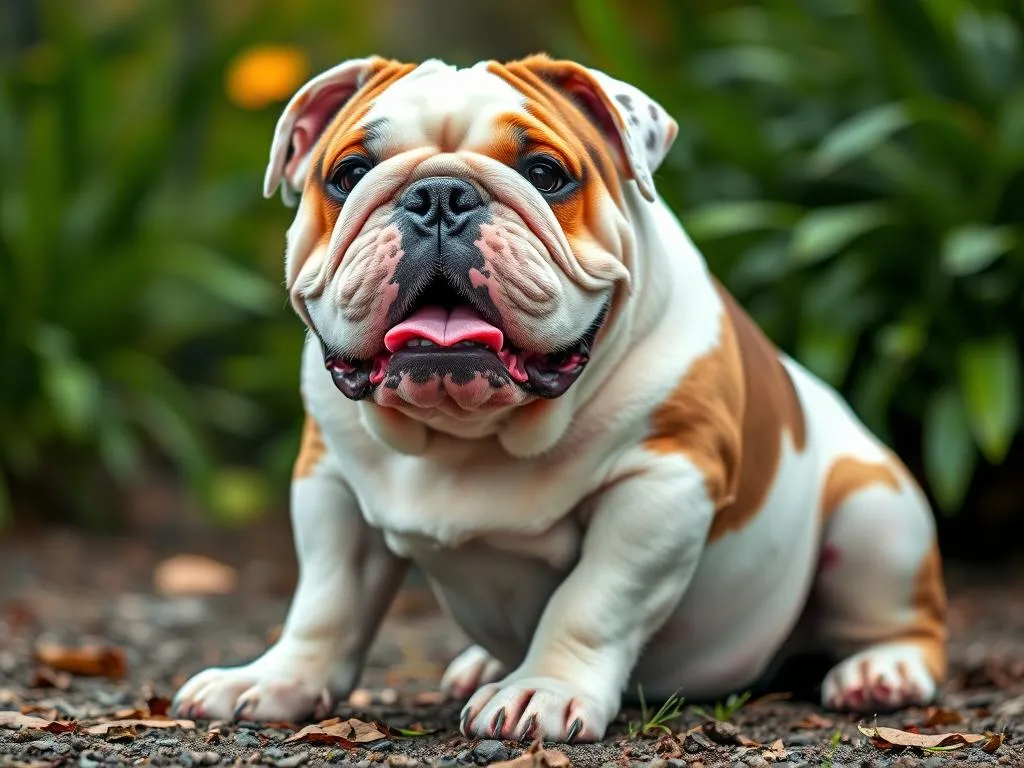
Introduction
Ensuring the health and well-being of our beloved pets is paramount for any dog owner. Dog health care goes beyond routine check-ups; it encompasses understanding breed-specific needs, potential health issues, and the breeding process. Among the various breeds, English Bulldogs have carved a niche for themselves, winning hearts with their wrinkled faces and charming personalities. However, their unique anatomy raises important questions regarding their breeding capabilities, particularly, are English Bulldogs able to breed naturally?
In this article, we will delve into the intricacies of English Bulldogs, explore their breeding capabilities, and discuss the health considerations that come into play during this process. By understanding these factors, prospective owners and breeders can make informed decisions that prioritize the health and happiness of these adorable canines.
Understanding English Bulldogs
Breed Characteristics
English Bulldogs are known for their distinctive appearance and amiable nature. With a stocky build, broad shoulders, and a heavyset frame, they typically weigh between 40 to 50 pounds. Their short, smooth coat comes in a variety of colors, including brindle, fawn, and white. However, it’s their unique facial structure—characterized by a short snout and pronounced facial folds—that sets them apart.
In terms of temperament, English Bulldogs are generally known for their calm and gentle demeanor. They are affectionate, loyal, and often described as sociable dogs that get along well with children and other pets. However, their stubbornness can sometimes pose challenges during training.
Common Health Issues
While English Bulldogs are beloved for their unique traits, they are also prone to several health issues. Understanding these potential concerns is essential for responsible ownership and breeding.
-
Brachycephalic Issues: Due to their short snouts, English Bulldogs often suffer from breathing difficulties, especially in hot or humid weather. This condition is known as brachycephalic obstructive airway syndrome (BOAS), which can severely impact their quality of life.
-
Skin Conditions: The folds of skin on their faces can trap moisture and dirt, leading to skin infections and irritations. Regular cleaning of these folds is crucial to prevent health issues.
-
Hip Dysplasia: This genetic condition affects the hip joint, leading to pain and mobility issues. It’s prevalent in many breeds, including Bulldogs.
-
Other Breed-Specific Health Concerns: English Bulldogs may also face issues like heart conditions, allergies, and joint problems. Regular veterinary check-ups and a healthy lifestyle can help manage these risks.
The Breeding Process in Dogs
Natural Breeding vs. Artificial Insemination
When exploring whether English Bulldogs can breed naturally, it’s essential to understand the different breeding methods.
-
Natural Breeding: This traditional method involves a male and female dog mating without human intervention. While it is the most natural way to breed dogs, it comes with its own set of challenges, especially for English Bulldogs.
-
Artificial Insemination: This method involves introducing sperm directly into the female dog’s reproductive tract using veterinary techniques. It is often preferred for breeds like Bulldogs, where physical limitations can hinder natural mating.
Pros and Cons of Each Method
| Method | Pros | Cons |
|---|---|---|
| Natural Breeding | Natural process, less invasive | Potential for mating difficulties |
| Artificial Insemination | Overcomes physical limitations, controlled | Requires veterinary expertise, can be costly |
The Estrous Cycle in Dogs
Understanding the estrous cycle is crucial for successful breeding. The heat cycle in dogs consists of several stages:
- Proestrus: The female’s body prepares for mating. Signs include swelling of the vulva and a bloody discharge.
- Estrus: This is the fertile period, lasting about 5 to 9 days, during which the female is receptive to mating.
- Diestrus: After estrus, the female’s body either prepares for pregnancy or returns to the normal cycle.
- Anestrus: This is the resting phase between cycles.
Recognizing the signs of each stage is vital for determining the right time for breeding.
Are English Bulldogs Able to Breed Naturally?
Anatomy and Physical Limitations
One of the primary concerns surrounding whether English Bulldogs are able to breed naturally lies in their unique anatomy. Their broad shoulders and large heads, combined with narrow hips, can make mating challenging. This physical disparity often leads to complications during the mating process, where positioning becomes problematic.
Additionally, many English Bulldog males may struggle to mount due to their short legs and stocky build. These factors significantly impact their ability to breed naturally, leading many owners and breeders to consider alternatives.
Successful Breeding Cases
Despite the challenges, there are instances of successful natural breeding among English Bulldogs. Factors contributing to these successful cases often include:
- Compatibility of Size: A smaller female may facilitate easier mating with a larger male.
- Experience: More experienced dogs tend to mate more successfully, having developed better instincts and techniques.
- Timing: Properly identifying the female’s heat cycle enhances the chances of successful mating.
However, these cases are exceptions rather than the norm, highlighting the need for careful consideration when breeding this unique breed.
Challenges of Natural Breeding in English Bulldogs
Mating Difficulties
As previously mentioned, physical compatibility can pose a significant hurdle for English Bulldogs during mating. The challenges include:
- Positioning: Due to their body structure, finding the right position for mating can be difficult.
- Behavioral Challenges: Males may exhibit confusion or frustration when attempting to mate, particularly if they have not been exposed to breeding before.
These difficulties not only complicate the mating process but also create stress for both dogs involved.
Health Risks for the Female
Breeding naturally can also pose health risks for the female English Bulldog. These risks include:
- Complications During Pregnancy: Due to their anatomy, English Bulldogs are at a higher risk for pregnancy complications, including gestational diabetes and obesity.
- Whelping Difficulties: The large heads of Bulldog puppies can make natural delivery challenging, leading to a high incidence of C-sections. These procedures are often necessary to ensure the safety of both the mother and her puppies.
Given these risks, it is crucial to have veterinary supervision throughout the breeding and whelping process.
Alternatives to Natural Breeding
Artificial Insemination
For many Bulldog owners, artificial insemination presents a viable alternative to natural breeding. This method offers several benefits:
- Overcomes Physical Limitations: With artificial insemination, the physical challenges of mating are eliminated, allowing for a higher success rate in breeding.
- Controlled Breeding: This method enables breeders to select specific genetic traits, promoting healthier offspring.
However, it requires access to veterinary services and may involve additional costs.
C-sections and Whelping Assistance
C-sections are common in English Bulldogs due to their anatomical challenges. The reasons for this include:
- Large Puppy Size: The size of Bulldog puppies often necessitates surgical intervention for safe delivery.
- Health Monitoring: Veterinary care during whelping ensures that both the mother and puppies are closely monitored for any complications.
Responsible breeders prioritize veterinary assistance during this process to safeguard the health of the dogs involved.
Responsible Breeding Practices
Genetic Testing and Health Screening
To promote the health of English Bulldogs, responsible breeders should engage in genetic testing and health screening. This includes:
- Testing for Hereditary Health Issues: Screening for conditions like hip dysplasia, heart problems, and skin conditions can help ensure healthier puppies.
- Health Certifications: Obtaining health clearances from recognized veterinary organizations adds credibility to breeding practices.
Ethical Considerations
The ethics of breeding English Bulldogs are a topic of ongoing discussion. Responsible breeders must consider the following:
- Prioritizing Health Over Aesthetics: The focus should be on producing healthy dogs rather than conforming to breed standards that may compromise their well-being.
- Education and Awareness: Breeders should educate prospective owners about the unique needs and potential health issues of the breed.
By promoting healthy breeding practices, breeders can contribute positively to the future of English Bulldogs.
Conclusion
In summary, understanding whether English Bulldogs are able to breed naturally involves a comprehensive look at their unique anatomy, breeding challenges, and health considerations. While some Bulldogs can successfully breed naturally, many face significant obstacles that may necessitate alternative methods like artificial insemination.
As responsible dog owners and breeders, it is imperative to prioritize the health and well-being of these dogs. By adhering to ethical breeding practices and remaining vigilant about potential health issues, we can ensure that English Bulldogs continue to thrive and bring joy to countless families.
For those considering bringing an English Bulldog into their homes, it is crucial to prioritize health care and responsible breeding practices. By doing so, we can help ensure a brighter future for this beloved breed.









